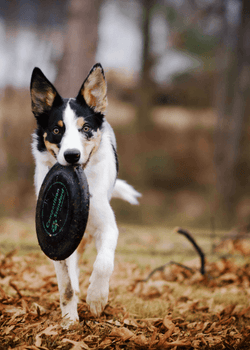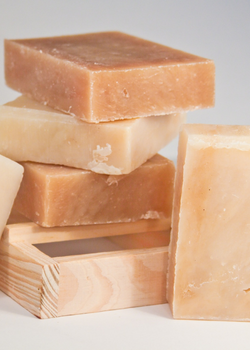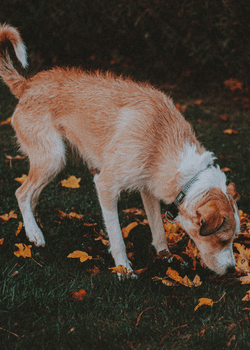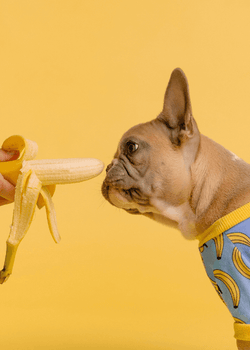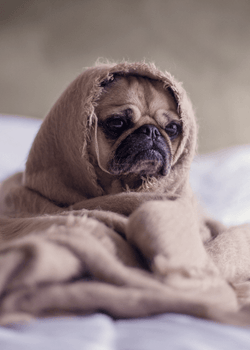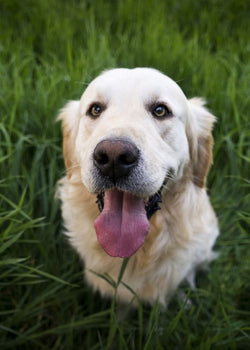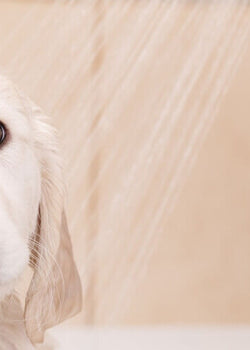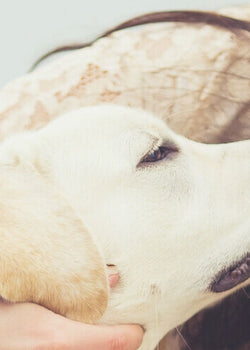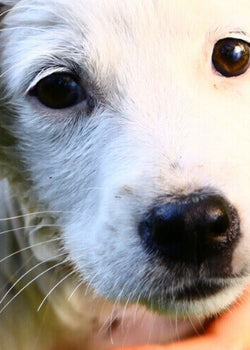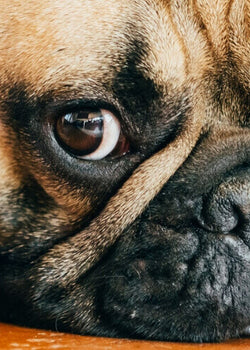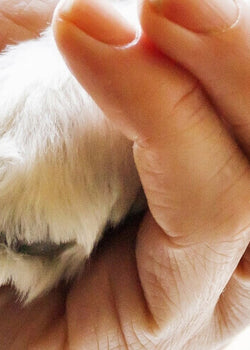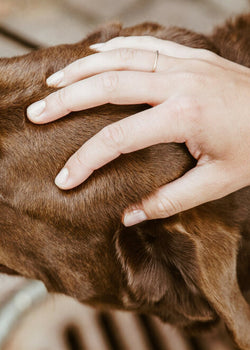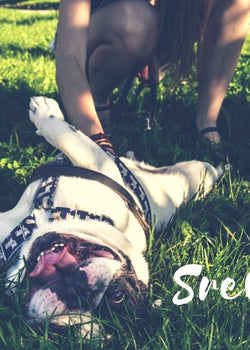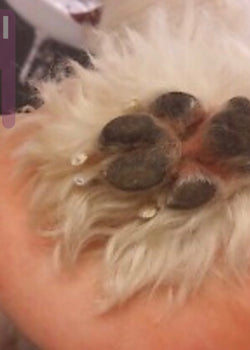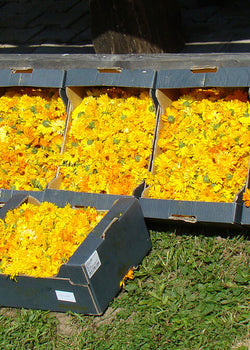Fungus in a dog
Fungus in dogs is an extremely common cause when it comes to skin problems.
Although bacteria and viruses are what people usually think of as an infection, fungi can also be to blame. It is true that they are not as common as bacterial or viral infections, but yeast infections in dogs can be just as serious.

Dogs can become infected through other animals, from the environment or as a result of overgrowth of fungi that are naturally present in their own body.
When your dog starts scratching more than usual, it can be hard to tell if it's an allergy , flea bites, fungus, or something else. Excessive scratching of the dog must be taken seriously, as wounds can occur, which can lead to additional problems such as bacterial skin inflammation.
Signs of fungus in a dog
The most common symptoms to watch out for are:
- Itchy skin (persistent, intense scratching)
- Inflammation between the toes in dogs
- Red skin
- Shaking the head from itching in the ears
- Hyperpigmentation (dark colored skin)
- Greasy hair + dandruff
- Hair loss
- Unpleasant dog smell
- Thickened skin
- Scaly, scaly skin
- Chronic ear infections
- Skin rashes in dogs
How does a dog get infected with fungus?
The skin is host to countless bacteria and fungi. Under normal circumstances, these organisms do not cause problems and are controlled by the immune system. However, if the number of bacteria and fungi on the skin increases and the immune system is weakened, these organisms can cause an infection.
Some dogs, however, have a chronically weakened immune system, which makes their body ineffective in fighting fungus. Also, dogs that consume certain drugs (eg corticosteroids) can have problems, as these cause the body to ineffectively fight against such infections. These causes can even lead to a chronic fungal infection.
Types of fungal infections in dogs
We know internal (in the body) and external (on the skin) fungal infections.
The most common in dogs is an external or superficial fungal infection . It can affect the dog's skin, coat and claws.
The most common symptoms are hair loss, itchy, scaly or thickened skin and brittle nails.
Usually, round-shaped rashes appear on the skin, which are very itchy or even painful.

These types of fungal infections are usually treated with antibiotics, but it is good to know that antibiotics alone do not kill the fungus, but only treat secondary bacterial infections. If your dog receives corticosteroids in addition to antibiotics, there is a risk that after the medication wears off, a more severe fungal outbreak will occur, as corticosteroids inhibit the functioning of the immune system and in this case the body itself no longer fights against the fungi.
As with any disease, it is important to treat the cause and not just the symptoms. Of course, it is important to relieve the symptoms and thereby prevent additional infections, but eliminating the cause is the key to a long-term solution to the problems.
In large cases, anti-fungal ointments and shampoos are already very effective in treating the disease.
But if you want to help him relieve his itchy skin yourself, you can do it like this:
Ingridients:
Instructions:
- 50ml of organic apple cider vinegar
- 50ml green tea (chilled) or distilled water
- If you wish, you can also add lavender or rosemary essential oil.
-
Mix the ingredients in a spray bottle. Shake well before each use, especially if you have added essential oil to the mixture.
-
Apply or spray on clean skin and fur, massage and leave to dry.
-
When the skin is dry, we recommend applying the Celilček Natural Ointment.
-
Repeat this every day until the itching subsides. The same recipe can also be used for itchy insect bites.
How to eliminate fungus in a dog?
You yourself can help a lot in eliminating fungus and preventing further infections. Read how:
Care
- Regular use of anti-fungal ointments .
It is important to use natural products, as these areas of the skin are usually very sensitive. The last thing you want is to make the condition worse by applying a certain cream that your pet's body rejects. You can do this daily. Be careful to apply the ointment to all critical areas, including between wrinkles.
- Daily brushing of the dog
With daily brushing, you will ensure the removal of dirt, dead skin, hair and the distribution of oils that are on the hair. It is also a good idea to examine the dog. This can help you find areas of infection at an early stage and make it easier to control. If you have a dog with wrinkles, regular inspection and cleaning is also very important.

- Avoiding high temperatures
Fungi multiply even faster in a warm and humid environment. In summer, it is recommended to walk in the morning and in the evening to avoid overheating. However, if you are going to be outside during intense heat, it is important to protect your pet from the sun.
- Ear care
There can be a lot of fungus and yeast in the ears, which can multiply and spread to other parts of your dog's body. If the ears are dirty, they have ideal conditions for reproduction. It is precisely for this reason that it is important to clean the shell regularly and thereby prevent the reproduction of organisms.
Strengthening the immune system
A strong immune system is important for the general well-being of our dog. By strengthening the immune system, we can help our pet fight against fungi and other infections.
- Dog hygiene
Proper hygiene is the main factor in strengthening our dog's immune system.
We all know that regular hygiene is important for our health. This also applies to our pets. The fact is that dogs deal with unclean things in a different way, as they mostly sniff and lick everything. Every day, your dog's immune system fights bacteria and dirt, but we must remember that not all bacteria are bad.

Therefore, regular hygiene of your dog is very important, as this will reduce the number of bacteria and, as a result, more immune reserves will remain. However, it is necessary to realize that too regular hygiene can harm your dog.
It is usually enough to bathe your dog once or twice a month.
- The dog's weight
The higher the dog's weight (above its ideal weight), the more its immune system fights. If your dog is overweight, it's a good idea to check what his average daily calorie intake should be and stick to it.
- Healthy food
A diet rich in nutrients is essential to maintaining your dog's immune system.
Antioxidants in particular play a major role in keeping your pet healthy. Antioxidants are vitamins and minerals in foods that prevent cell damage. Antioxidants are readily available in many common foods such as berries, fruits and vegetables. Some dog foods contain antioxidants, although usually not in high enough amounts to make a big difference to your dog's health.

Here is a list of antioxidant-rich foods that you can add to your dog's diet in moderation:
- Berries: Strawberries, cranberries, blueberries, raspberries
- Apples
- Plums
- Beans: red and black
- Cabbage
- Broccoli
- Regular cleaning of bowls and toys
Washing toys and bowls reduces the daily burden of bacteria on the immune system. Washing these items daily with warm water (avoid soaps and powders) is important for your dog's health. After washing, be sure to dry or wipe toys and bowls well, as moisture is an excellent breeding ground for bacteria.
How to prevent fungal infections in dogs?
The main factors that enable the rapid development of fungi and yeasts are: dirt, moisture and heat. If you are worried about fungal infections and want to prevent them as much as possible, be especially careful in the following activities:
Swimming in the lake/pool
There is nothing wrong with taking your pet to the lake where he swims and enjoys. On the contrary, it is a great solution for refreshing during the summer months. However, it is necessary to pay attention to how we act after finishing the activity. To prevent fungal infections, it is important to wipe and dry your dog after bathing.

Walking/training in the heat
In the summer months and on hot days, try to avoid walking/training in the heat and when there is a lot of humidity, because then fungi have excellent conditions for reproduction.
Sweet snacks
Yeasts love sugar, so avoid food and treats that include ingredients such as: honey, corn, wheat, rice, starch...
Poor hygiene
Regular care for the cleanliness of the dog is important. Mainly bathing, cleaning paws and ears. However, as already mentioned, it is important not to overdo it when bathing, as this can have the opposite effect.


